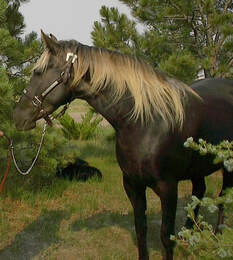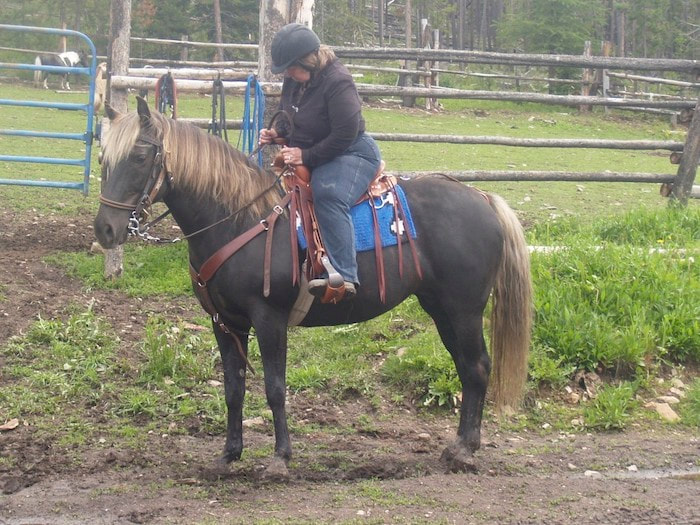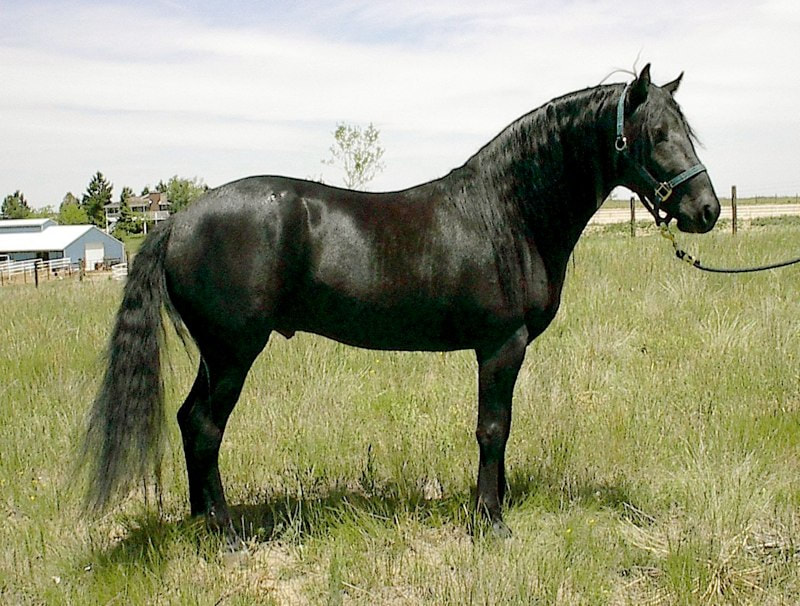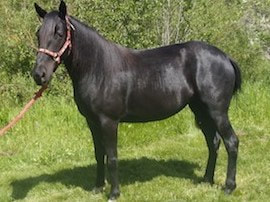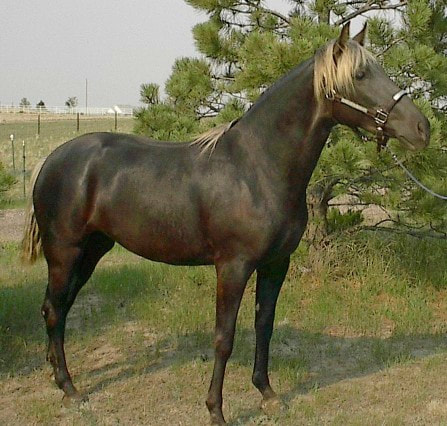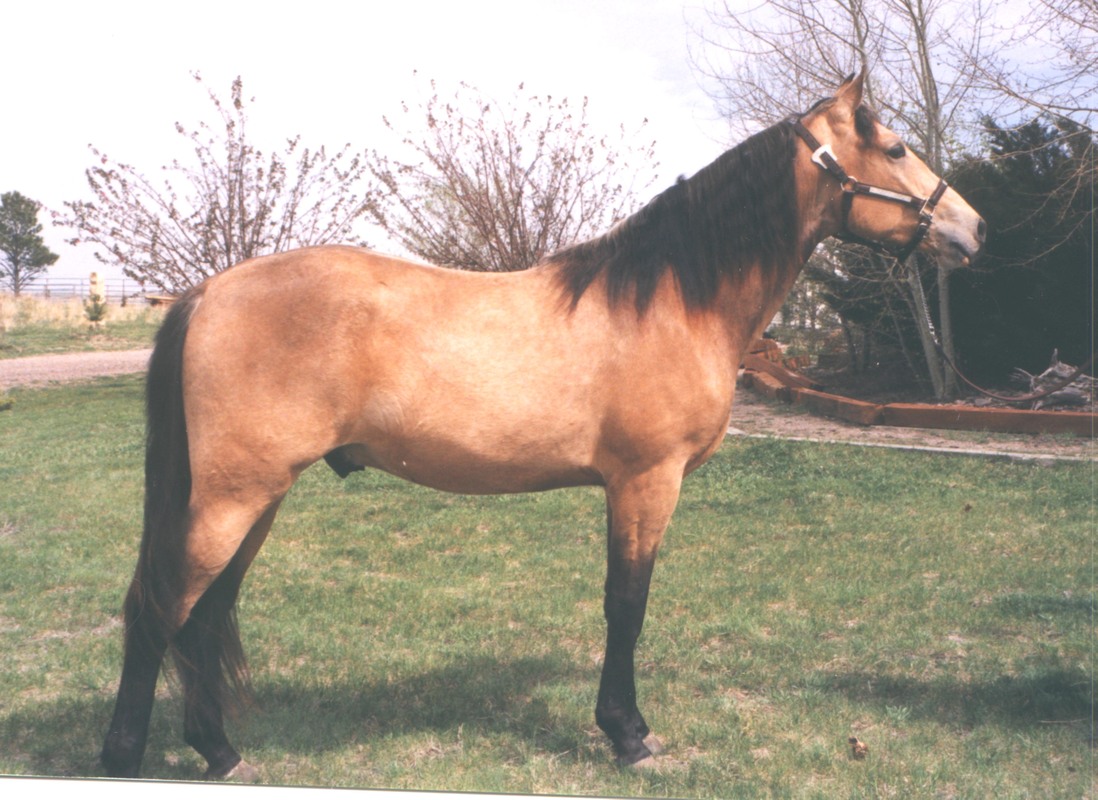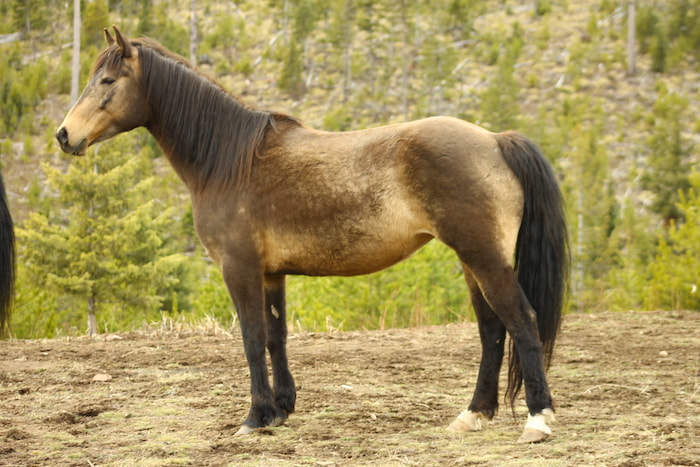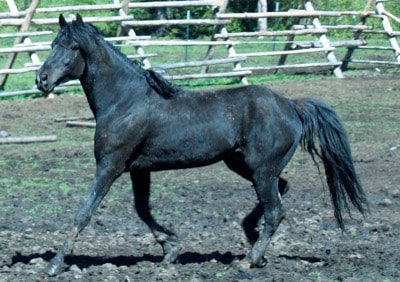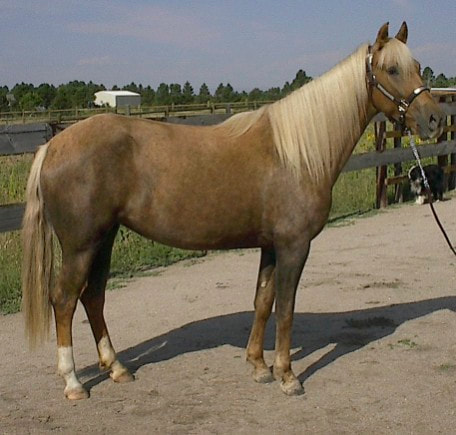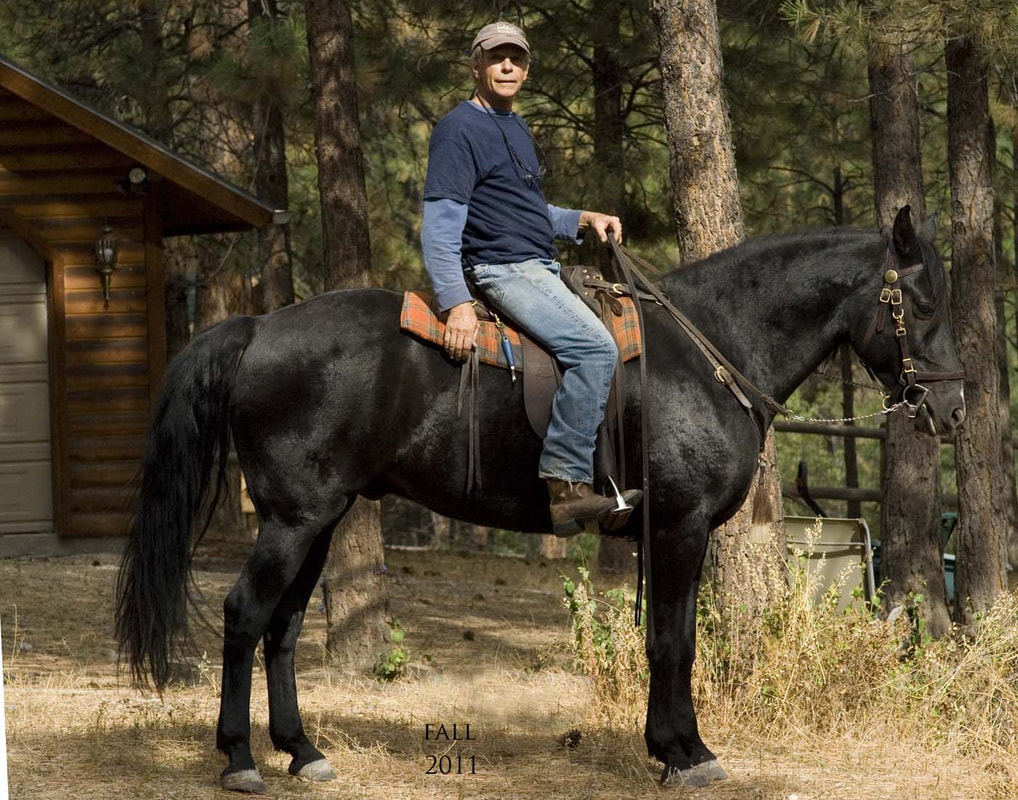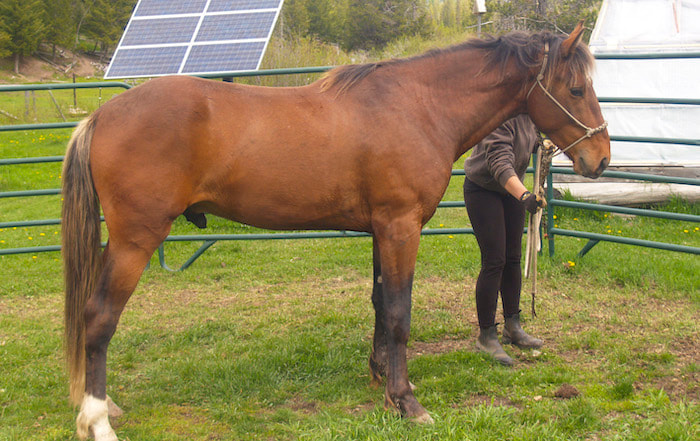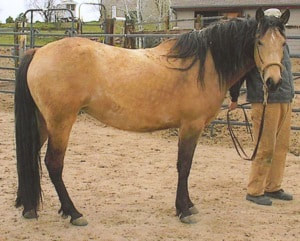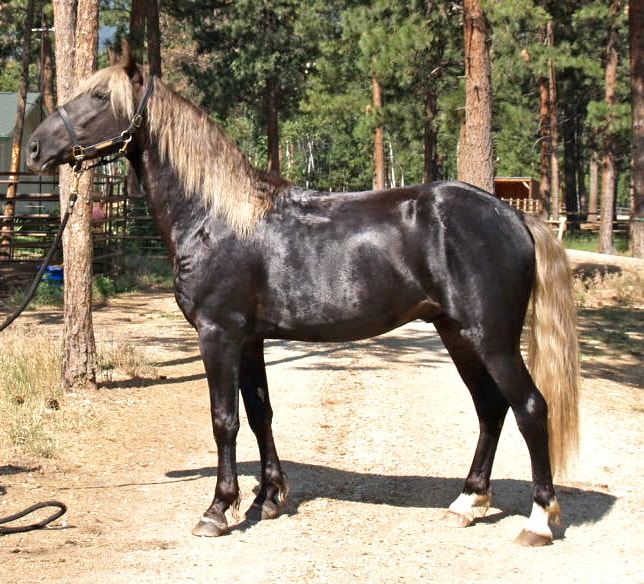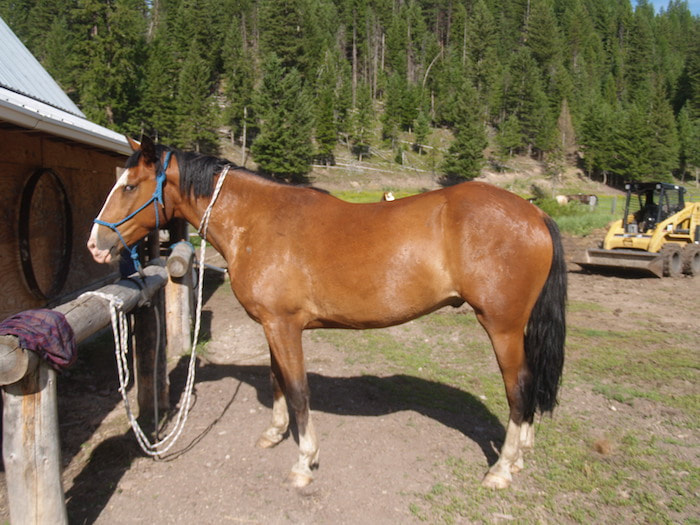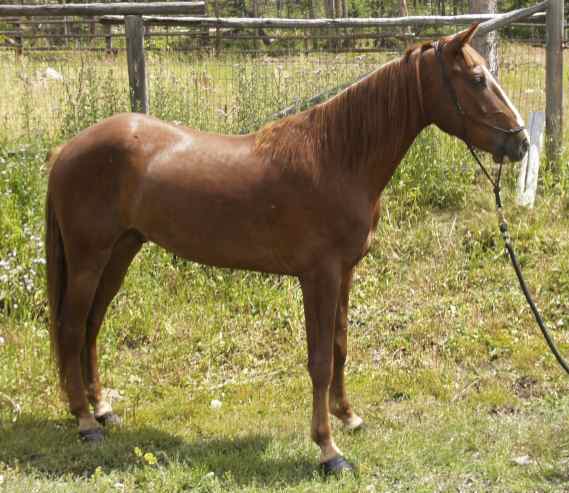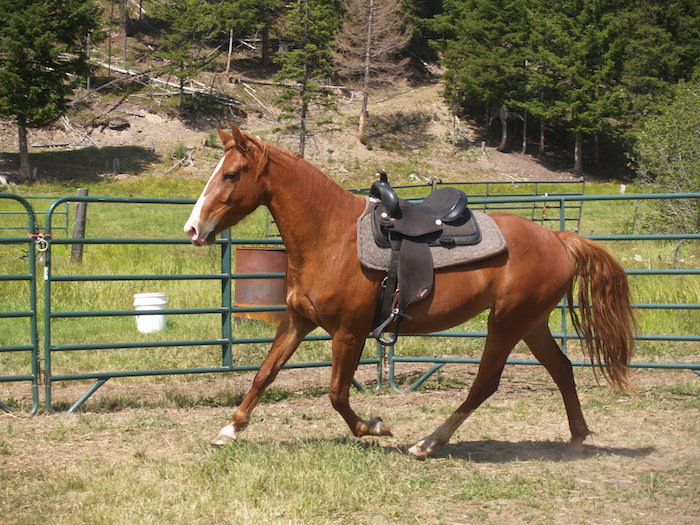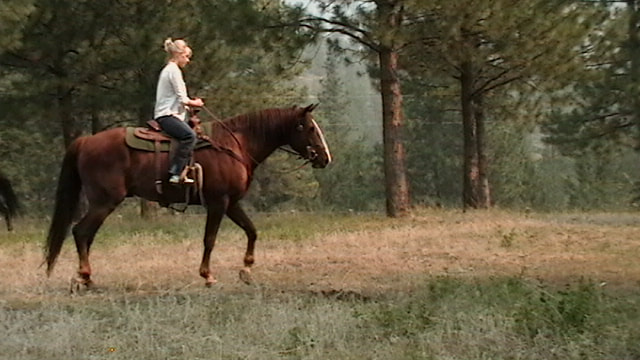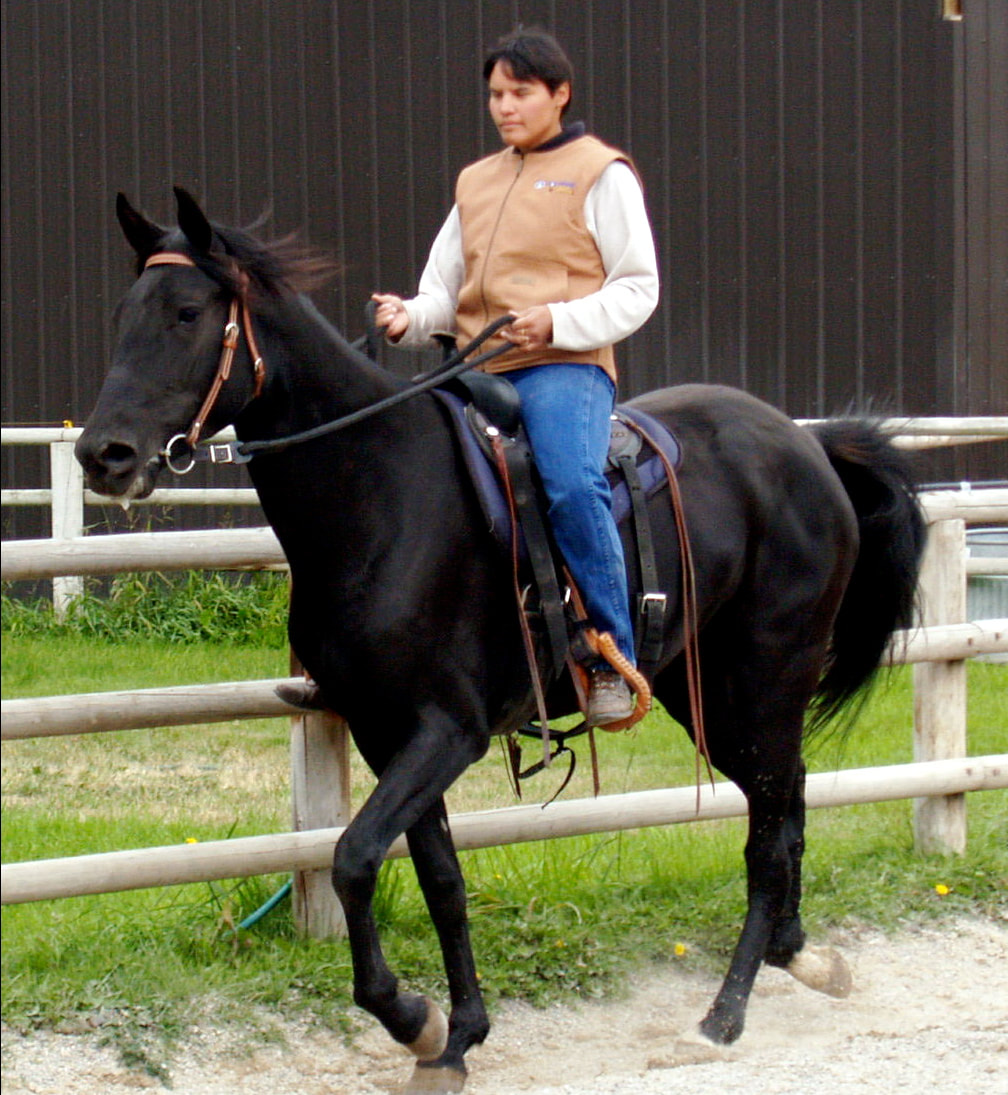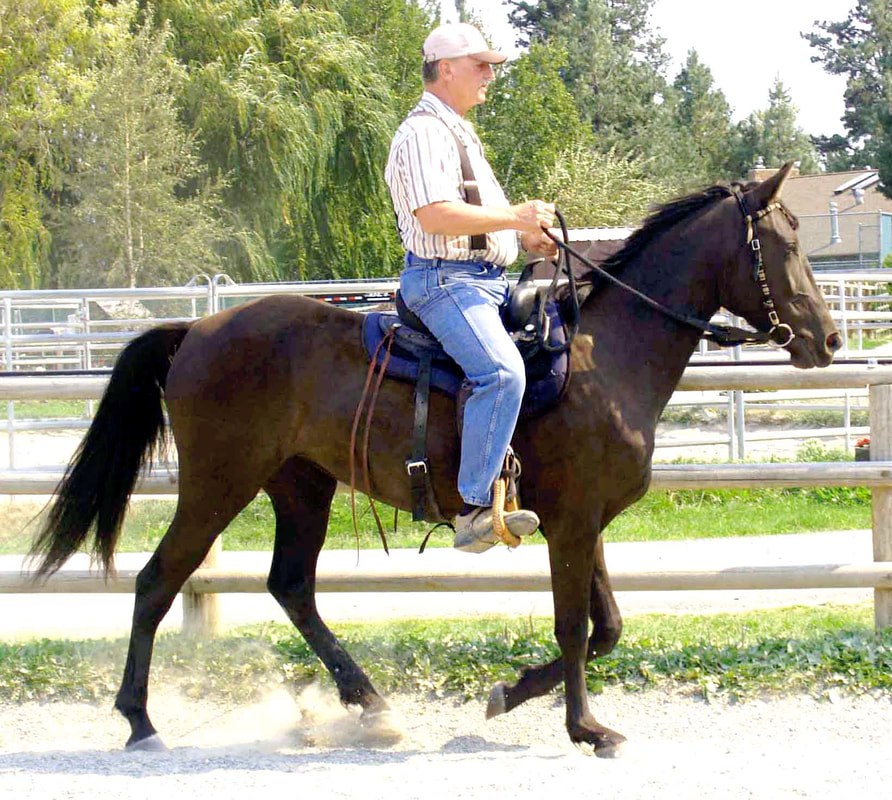|
The Rocky Mountain Horse is one of the most popular up-and-coming horse breeds in the U.S. today, and there's good reason for that. They are unusually safe, comfortable and people-oriented. They rarely spook and when they do they do it by freezing in place. These horses want to be with you as much as you want to be with them - they will leave their buddies and their food to follow you around the pasture all day while you fix fences. And they have the ability to move with a smooth fifth gait which allow their rider to fly down the trail at speed, without having to deal with the discomfort of a trot.
|
What They Look Like
When I first heard about the Rocky Mountain Horse breed I assumed they must be ugly. After all - calm, not inclined to spook, great in the mountains, healthy and people oriented - there must be something wrong with them or why would anyone ever want any other type of horse? I was wrong.
Rocky Mountain Horses are beautiful. They tend to have long, full manes and tails. Thick, majestic necks. They come in all sorts of colors, including an unusual, striking dark brown body with a flaxen or white mane and tail. They are horses to make anyone proud.
The typical Rocky Mountain Horse is 14-16 hands tall tall with strong bones which often make the horse much stockier than it looks at first glance. They likely have some draft in their ancestry, but you wouldn't know it unless you looked closely.
The Rocky Mountain Horse Association describes the Breed Standard like this:
"The height of the Rocky Mountain Horse will be no less than 58 inches (14.2 hands) and no more than 64 inches (16.0 hands). Medium sized bones, with medium sized feet in proportion to the body. A wide and deep chest with a span between the forelegs. The fore and hind legs should be free of noticeable deformity. Sloping shoulders (ideally with an angle of 45 degrees). Bold eyes, well-shaped ears and a face that is neither dished nor protruding. The head should be of medium size in proportion to the body with medium jaws. The neck should be gracefully arched, medium in length and set on an angle to allow natural carriage with a break at the poll. The horse must have a solid body color. There shall be no white above the knee or hock except on the face where modest amounts of white markings are acceptable. Excessive facial markings such as a “bald faced” horse are not acceptable."
But I explain it like this: Rockies are medium sized horses with rounded, compact hips and bodies. They look like any other horse from a distance, but close up you can see that they are stocky (reminiscent of draft horses in some cases), with impressively strong legs and feet. Their bodies tend to be short and compact, but, as with any breed, there is some variety of body type in the Rocky Mountain Horse breed. I consider there to be three typical but slightly different body types in the Rocky Mountain Horse Breed: the small, Spanish Influenced type, the thinner and lankier, western-horse type and an in between mix of those two which creates a great, slightly stocky, slightly taller but still rounded and well muscled body.
When I first heard about the Rocky Mountain Horse breed I assumed they must be ugly. After all - calm, not inclined to spook, great in the mountains, healthy and people oriented - there must be something wrong with them or why would anyone ever want any other type of horse? I was wrong.
Rocky Mountain Horses are beautiful. They tend to have long, full manes and tails. Thick, majestic necks. They come in all sorts of colors, including an unusual, striking dark brown body with a flaxen or white mane and tail. They are horses to make anyone proud.
The typical Rocky Mountain Horse is 14-16 hands tall tall with strong bones which often make the horse much stockier than it looks at first glance. They likely have some draft in their ancestry, but you wouldn't know it unless you looked closely.
The Rocky Mountain Horse Association describes the Breed Standard like this:
"The height of the Rocky Mountain Horse will be no less than 58 inches (14.2 hands) and no more than 64 inches (16.0 hands). Medium sized bones, with medium sized feet in proportion to the body. A wide and deep chest with a span between the forelegs. The fore and hind legs should be free of noticeable deformity. Sloping shoulders (ideally with an angle of 45 degrees). Bold eyes, well-shaped ears and a face that is neither dished nor protruding. The head should be of medium size in proportion to the body with medium jaws. The neck should be gracefully arched, medium in length and set on an angle to allow natural carriage with a break at the poll. The horse must have a solid body color. There shall be no white above the knee or hock except on the face where modest amounts of white markings are acceptable. Excessive facial markings such as a “bald faced” horse are not acceptable."
But I explain it like this: Rockies are medium sized horses with rounded, compact hips and bodies. They look like any other horse from a distance, but close up you can see that they are stocky (reminiscent of draft horses in some cases), with impressively strong legs and feet. Their bodies tend to be short and compact, but, as with any breed, there is some variety of body type in the Rocky Mountain Horse breed. I consider there to be three typical but slightly different body types in the Rocky Mountain Horse Breed: the small, Spanish Influenced type, the thinner and lankier, western-horse type and an in between mix of those two which creates a great, slightly stocky, slightly taller but still rounded and well muscled body.
|
Spanish Type
The first type takes after the Spanish Mustangs that had a big part in the ancestry of the Rocky Mountain Horse. These are round of body, small and compact, with lots of mane and tail. They tend to have beautiful, muscled necks and their legs are short and fast, tucked a little under their bodies. They typically fly down the trail in a wonderful, easy to ride, four-beat gait which hardly moves the rider at all. |
|
|
|
Medium Type
Then next Rocky Mountain Horse type clearly shows the compact, rounded body of the Spanish influence, but pulls in a larger, slightly more stretched out conformation as well. This type tends to be between 14.2-15 hands and is very much a cross between the first and third Rocky Mountain Horse type. This may be the most common body style for a Rocky Mountian Horse. Though from a distance this type doesn't look unusually stocky, up close you can see that their legs and bones are exceptionally strong and wide. |
|
Western Type
The third type is less stocky, less rounded, and a bit more like a more typical western style horse. It is my opinion that, though many of these horses are exceptional Rocky Mountain Horses, that theirs is the influence of the outside bloodlines that snuck in at the beginning of the registry (things like Thoroughbreds and Tennessee Walkers). |
